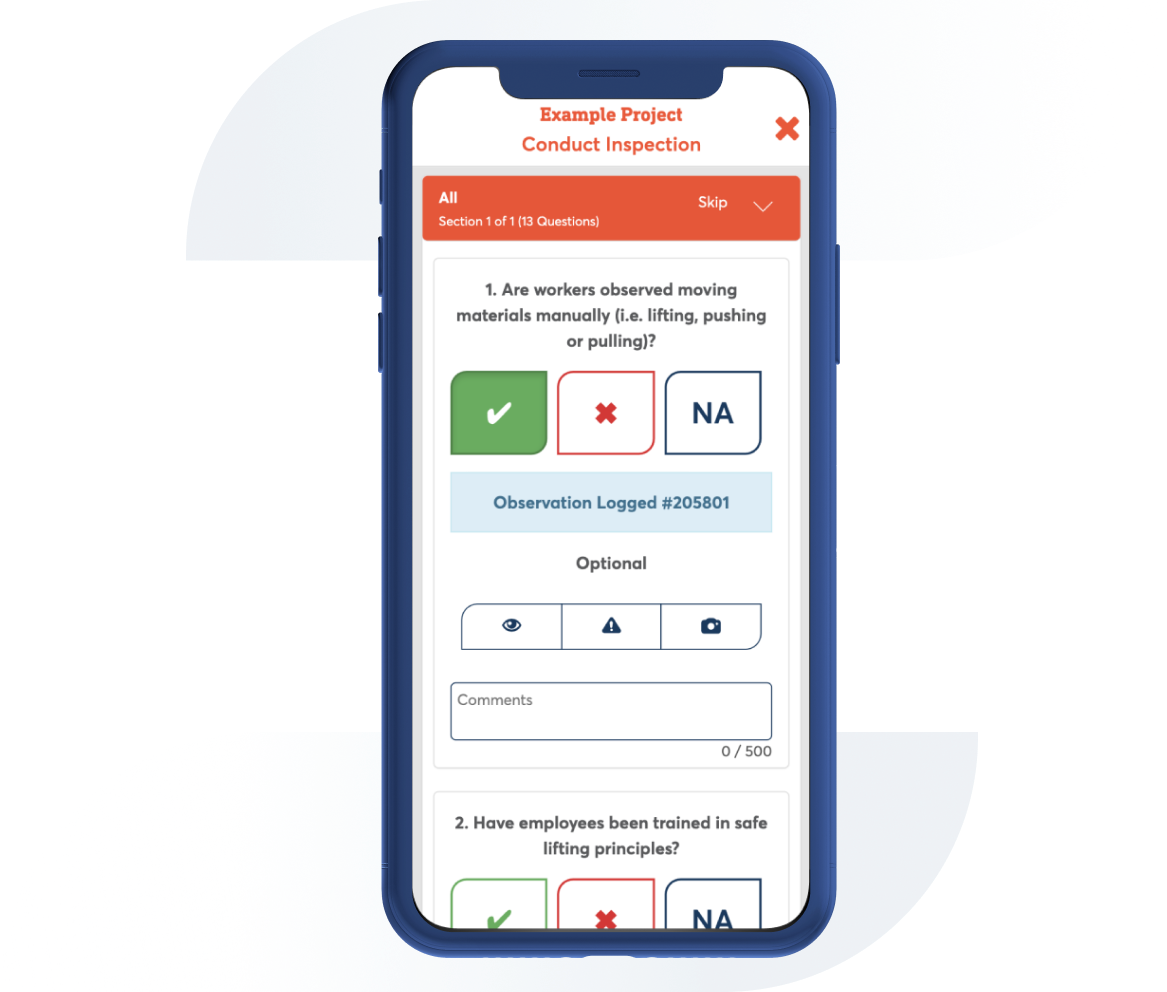Housekeeping standards
Contributor: Safesite Jurisdiction: OSHA
This inspection covers general guidelines for housekeeping using OSHA standards across industries. This can be used by all personnel to ensure safe practices.

Template Preview
1. Is there a program in place and followed that prevents the accumulation of dust on floors, decks, and ledges, particularly outside of abrasive-blasting enclosures?
Actions
2. Is sufficient ventilation in place to (1) provide good operator visibility, (2) prevent dust from settling and accumulating in the room, (3) reduce dust concentrations, and (4) prevent the escape of contaminants into adjacent work areas or the environment?
Actions
3. Are dust residues cleaned at regular intervals and in areas that may be normally overlooked (e.g., overhead)?
Actions
4. Are cleaning methods in place to minimize dust clouds, particularly where ignition sources are present?
Actions
5. Are vacuum cleaners approved for dust collection onsite and used?
Actions
1. Is potable water made available to workers for drinking, cooking, food preparation, worker health and personal needs?
Actions
2. Are non-potable water outlets clearly marked "NOT SAFE FOR HEALTH OR PERSONAL USE"?
Actions
3. Are toilets clean, serviceable, seperate for each sex, and adequate in number at the worksite?
Actions
4. Are handwashing facilities adjacent to each toilet facility and do they contain: hot and cold or lukewarm running water and soap, or waterless skin-cleansing agents; clean, single-use hand towels stored in a sanitary container, clean individual sections of continuous cloth toweling, or air blowers; and a sanitary means for disposing of single-use hand towels?
Actions
1. Is there a schedule for servicing, cleaning, and supplying each facility in place?
Actions
2. Are required cleaning products available, stored correctly and employees trained on proper cleaning methods?
Actions
3. Where a servicing, cleaning, and supplying schedule is in place, is it being followed?
Actions
1. Are changing rooms available for workers to change into and from protective clothing to prevent contamination from hazardous or toxic substances?
Actions
2. Do changing rooms provide privacy for each gender?
Actions
3. Do changing rooms provide separate storage facilities for street clothes?
Actions
4. Do changing rooms provide separate storage for protective clothing?
Actions
5. Are designated areas provided for the consumption or storing of food, beverages, and tobacco products? Are these areas free from exposure to toxic substances?
Actions
6. Is there a vermin control program in place that is maintained?
Actions
1. Is the work area constructed, equipped, and maintained to prevent the entrance or harborage of rodents, insects, and other vermin?
Actions
2. Are walkways and working surfaces clean and clear of debris?
Actions
3. Are working surfaces kept dry, or are other protective measures in place that include drainage, false floors, platforms, mats, and designated dry standing areas?
Actions
4. Are slippery conditions, such as snow and ice, eliminated in designated walkways and working surfaces?
Actions
5. Are obstructions, such as nails, splinters, holes or loose boards eliminated from walkways and working surfaces?
Actions
6. Are tools, materials, equipment, and other objects used during servicing or maintenance kept clear of walkways to allow for adequate passage?
Actions
7. Are oily or solvent contaminated rags kept in covered containers that are emptied daily?
Actions
8. Are hoses and electrical service cords positioned to prevent injury to workers or damage to the hoses and cords themselves (e.g., crossover planks, beneath grating, stowed overhead)?
Actions
9. Are exit routes clearly marked “Exit,” as well as indicating the direction of travel to the exit, if not immediately apparent?
Actions
10. Are doorways, emergency exits, fire protection equipment, electrical panels, eyewash stations, and safety showers free from obstructions?
Actions
11. Are passageways, walkways, and working surfaces kept clear of steel shot or similar abrasives that may create a slipping hazard?
Actions
12. Write Comments or Remarks here:

Can't find what you are looking for?
